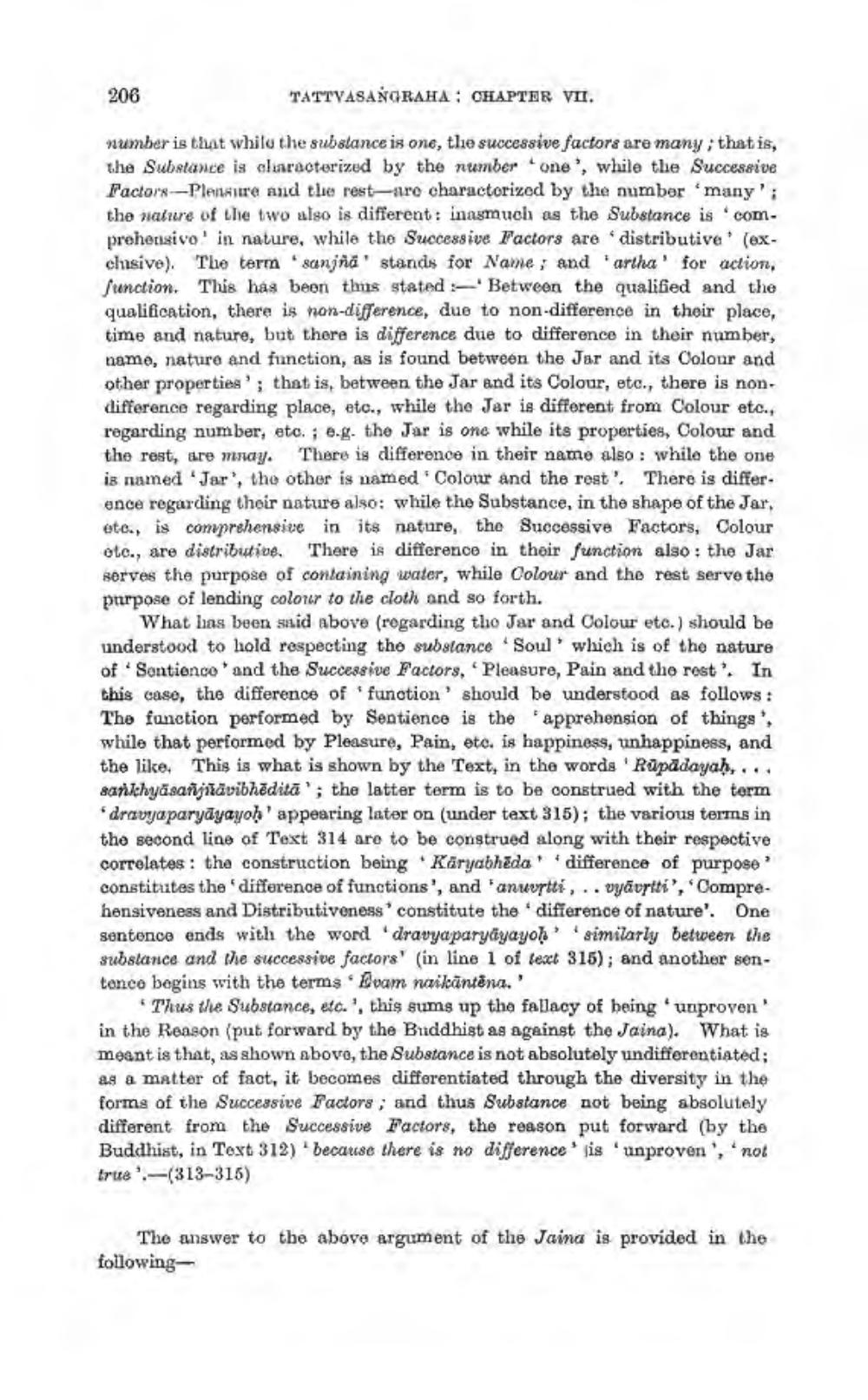________________
206
TATTVASANGRAHA : CHAPTER VII.
number is that while the substance is one, tlie successive factors are many; that is, the Substance is characterized by the number one, while the Successive Factors-Plensure and the rest-are charactorized by the number many'; the nature of the two also is different: inasmuch as the Substance is comprehensivo in nature, while the Successive Factors are distributive (exclusive). The term "sanjñá' stands for Name, and artha' for action, function. This has been this stated - Between the qualified and the qualification, there is non-difference, due to non-difference in their place, time and nature, but there is difference due to difference in their number, name, nature and function, as is found between the Jar and its Colour and other properties'; that is, between the Jar and its Colour, etc., there is nondifference regarding place, etc., while the Jar is different from Colour etc., regarding number, etc. ; e.g. the Jar is one while its properties, Colour and the rest, are way. There is difference in their name also: while the one is named 'Jar', the other is named 'Colour and the rest'. There is differ. ence regarding their nature also: while the Substance, in the shape of the Jar. etc., is comprehensive in its nature, the Successive Factors, Colour etc., are distribution. There is difference in their function also : the Jar serves the purpose of containing water, while Colour and the rest serve the purpose of lending colour to the cloth and so forth.
What las been said above (regarding tho Jar and Colour etc.) should be understood to hold respecting the substance Soul' which is of the nature of Sentience and the Successive Factors, Pleasure, Pain and the rest. In this case, the difference of function should be understood as follows: The fonction performed by Sentience is the apprehension of things', while that performed by Pleasure, Pain, etc. is happiness, unhappiness, and the like. This is what is shown by the Text, in the words 'Rupadayah, ... sarichyāsañjilāvibhēdita'; the latter term is to be construed with the term
dravyaparydyayoh' appearing later on (under text 315); the various terms in the second line of Text 314 are to be construed along with their respective correlates the construction being Karyabhēda' ' difference of purpose constitutes the difference of functions', and 'anuevotti, .. vyāuriti', 'Comprehensiveness and Distributiveness constitute the difference of nature'. One sentence ends with the word 'dravyaparyayayoh similarly between the substance and the successive factors' (in line 1 of teact 315); and another sentonco begins with the terms Doam nailanténa.'
Thus the Substance, etc.', this sums up the fallacy of being utproven in the Reason (put forward by the Buddhist as against the Jaina). What is meant is that, as shown above, the Substance is not absolutely undifferentiated: as a matter of fact, it becomes differentiated through the diversity in the forms of the Successive Factors, and thus Substance not being absolutely different from the Successive Factors, the reason put forward (by the Buddhist, in Text 312) because there is no difference is 'unproven', not true':-(313-316)
The answer to the above argument of the Jaina is provided in the following




